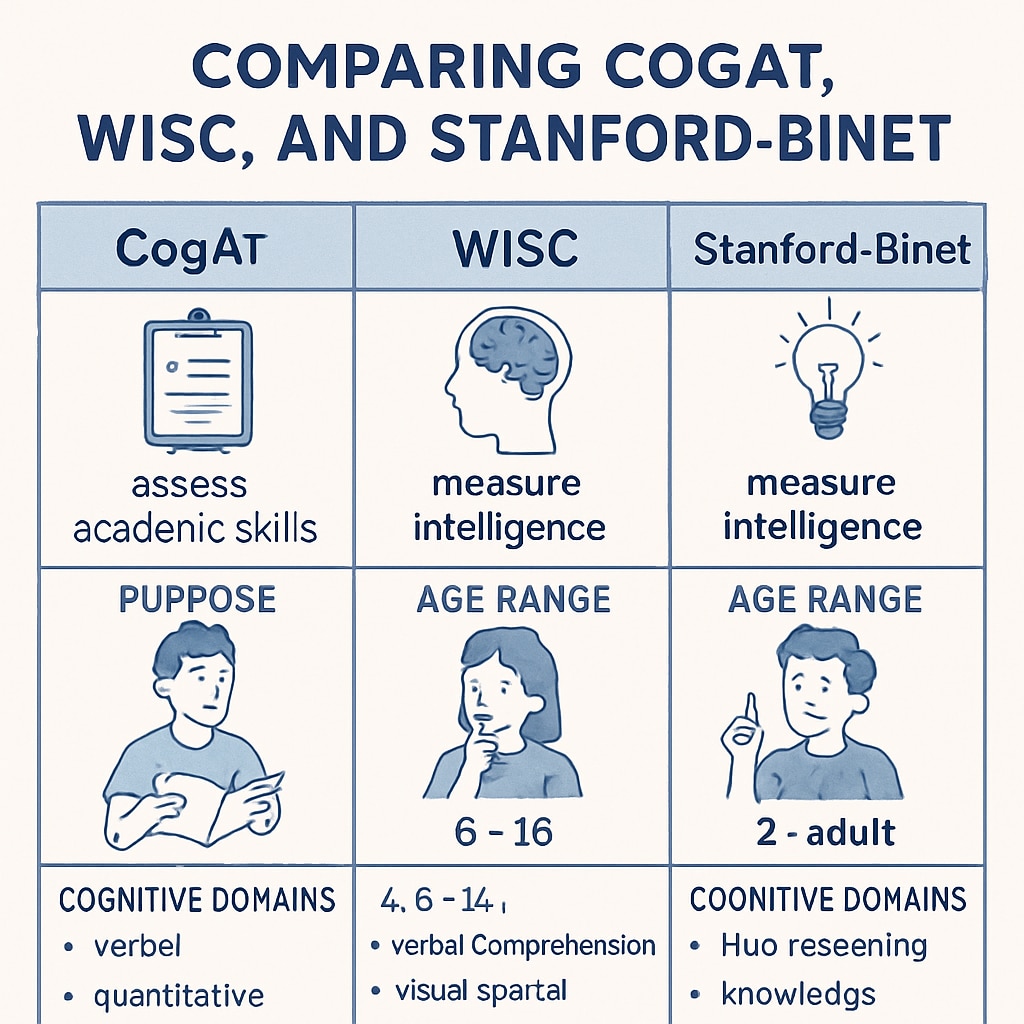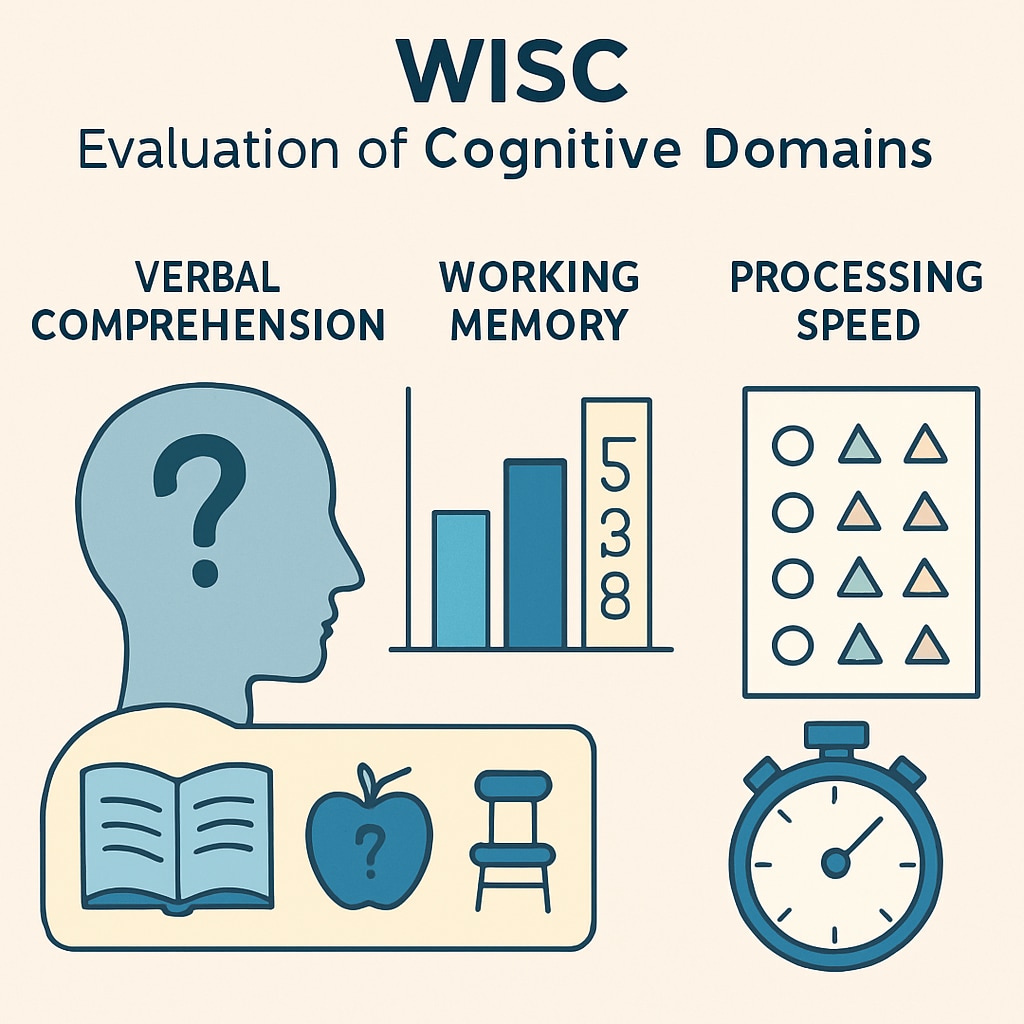Every parent wants to unlock their child’s full potential, and standardized intelligence tests like CogAT, WISC, and Stanford-Binet are designed to help identify giftedness. These tests serve as powerful tools to evaluate cognitive abilities, offering insights into a child’s unique talents and areas for development. However, with so many options available, how can parents and educators determine which test is the best fit? This article explores the leading intelligence tests and provides a guide to selecting the most suitable one for your child.
Understanding the Role of Intelligence Tests in Gifted Assessments
Standardized intelligence tests are designed to measure a range of cognitive abilities, including reasoning, problem-solving, memory, and verbal skills. They are particularly useful in identifying gifted children who may benefit from specialized educational programs. However, it’s important to remember that no single test can provide a comprehensive picture of a child’s abilities.
For example, the Cognitive Abilities Test (CogAT) evaluates reasoning abilities across verbal, quantitative, and nonverbal domains, making it ideal for identifying strengths and weaknesses in specific areas. On the other hand, the Wechsler Intelligence Scale for Children (WISC) focuses on a broader range of cognitive skills, including working memory and processing speed, while the Stanford-Binet Intelligence Scale offers an in-depth analysis of general intelligence.

Comparing the Top Giftedness Tests: CogAT, WISC, and Stanford-Binet
Choosing the right test requires an understanding of each test’s purpose, methodology, and suitability for your child. Here’s an overview of the three most common assessments:
- Cognitive Abilities Test (CogAT): Designed for children aged 5 to 18, the CogAT measures reasoning abilities in verbal, quantitative, and nonverbal contexts. It is particularly useful for identifying students who excel in specific areas, such as mathematics or abstract reasoning. Learn more about CogAT on Wikipedia.
- Wechsler Intelligence Scale for Children (WISC): Suitable for ages 6 to 16, the WISC is widely regarded as the gold standard for cognitive assessment. It evaluates multiple domains, including verbal comprehension, visual-spatial reasoning, and processing speed. Explore WISC on Britannica.
- Stanford-Binet Intelligence Scale: This test is appropriate for children as young as 2 and offers a comprehensive assessment of general intelligence, including fluid reasoning, knowledge, and quantitative reasoning.

Factors to Consider When Choosing a Test
While all three tests are highly regarded, the choice ultimately depends on your child’s individual needs and the goals of the assessment. Here are some key factors to consider:
- Purpose of Testing: Are you looking to identify specific strengths, assess overall intelligence, or qualify for a gifted education program?
- Age Range: Ensure the test is appropriate for your child’s age to get the most accurate results.
- Cognitive Domains: Different tests emphasize different areas of cognition. For example, CogAT focuses more on reasoning abilities, while WISC provides a more holistic view of intelligence.
- Test Format: Some children perform better in verbal tasks, while others excel in nonverbal or visual-spatial challenges. Understanding your child’s preferred learning style can help guide your choice.
Beyond the Test: Cultivating Your Child’s Potential
Identifying giftedness is only the first step. Once potential has been recognized, it’s essential to create an environment that nurtures your child’s unique talents. This may involve enrolling them in specialized programs, providing enrichment activities, or fostering creative problem-solving at home.
Additionally, parents and educators should remember that intelligence tests are just one part of the puzzle. Emotional intelligence, creativity, and social skills are equally important factors in a child’s overall development. A well-rounded approach ensures that gifted children thrive in all aspects of their lives.
In conclusion, tests like CogAT, WISC, and Stanford-Binet offer valuable insights into a child’s cognitive abilities, but selecting the right one requires careful consideration. By understanding the strengths and limitations of each test, parents and educators can make informed decisions that support the growth and development of gifted children.
Readability guidance: Use short paragraphs and bullet points to summarize key points; maintain clear transitions between topics; ensure the content is easy to navigate for parents and educators seeking actionable advice.


